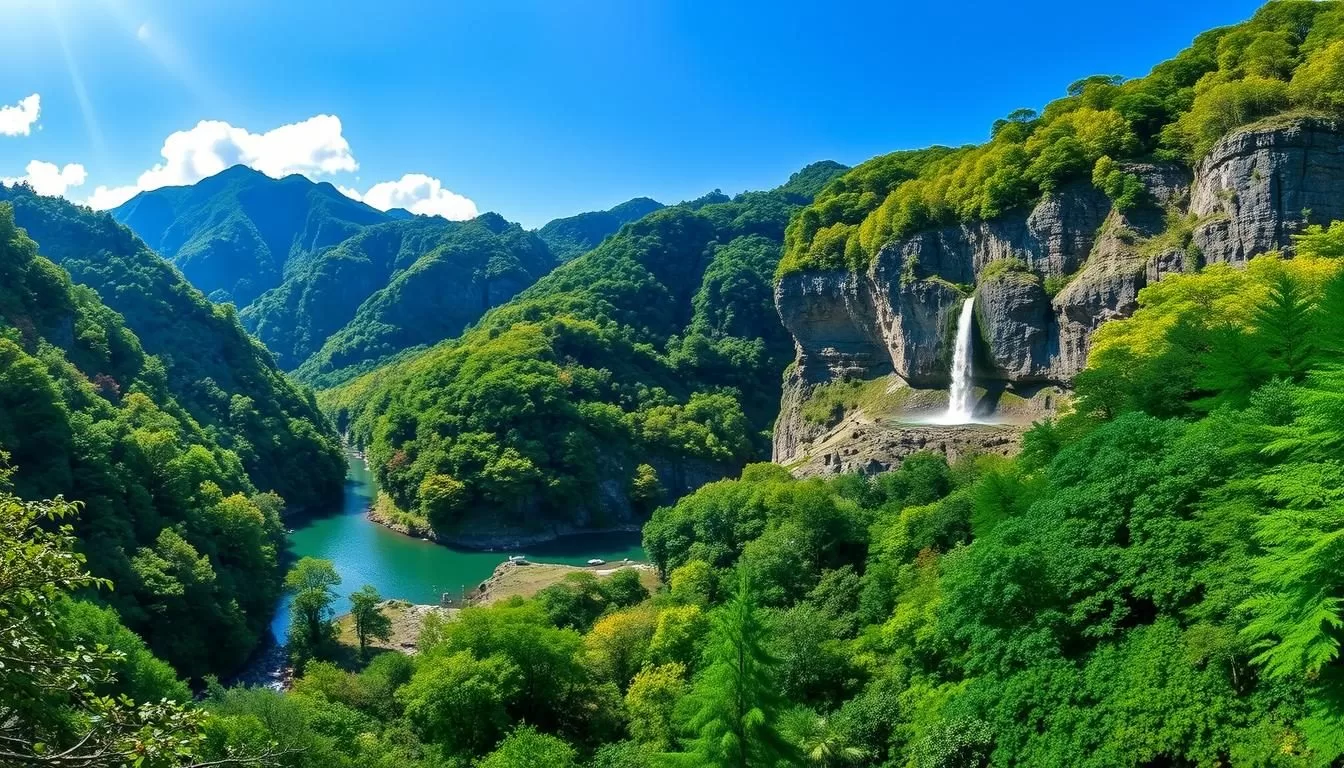Nestled in the Kii Peninsula, this breathtaking area is a testament to nature’s splendor, where majestic mountains meet profound spiritual significance.
As you explore this UNESCO-recognized site, you’ll uncover a diverse range of experiences that showcase the perfect blend of natural beauty and cultural heritage. From the world-famous cherry blossoms to ancient pilgrimage routes, every moment is a discovery.
This guide will help you navigate the most rewarding activities and sights, ensuring your visit is nothing short of extraordinary. Get ready to immerse yourself in the wonders of this incredible destination.
Discovering Yoshino Kumano National Park
Located on the Kii Peninsula, Yoshino Kumano National Park is a testament to Japan’s rich cultural and natural heritage. As you explore this enchanting region, you’ll discover a unique blend of spiritual significance and breathtaking natural beauty.
Location and Significance
The park is situated in a significant area that has been a pilgrimage site for over a millennium. It encompasses a diverse range of landscapes and cultural sites, making it a fascinating destination for travelers. The region’s historical importance is evident in its numerous temples and shrines, which are connected by ancient pilgrimage routes.
UNESCO World Heritage Status
In 2004, Yoshino Kumano National Park was designated as part of the “Sacred Sites and Pilgrimage Routes in the Kii Mountain Range” UNESCO World Heritage Site. This prestigious recognition highlights the park’s cultural and natural significance, including its shrines and primeval forests. Embarking on a journey through the park allows you to follow in the footsteps of pilgrims who have traveled these sacred paths for centuries.
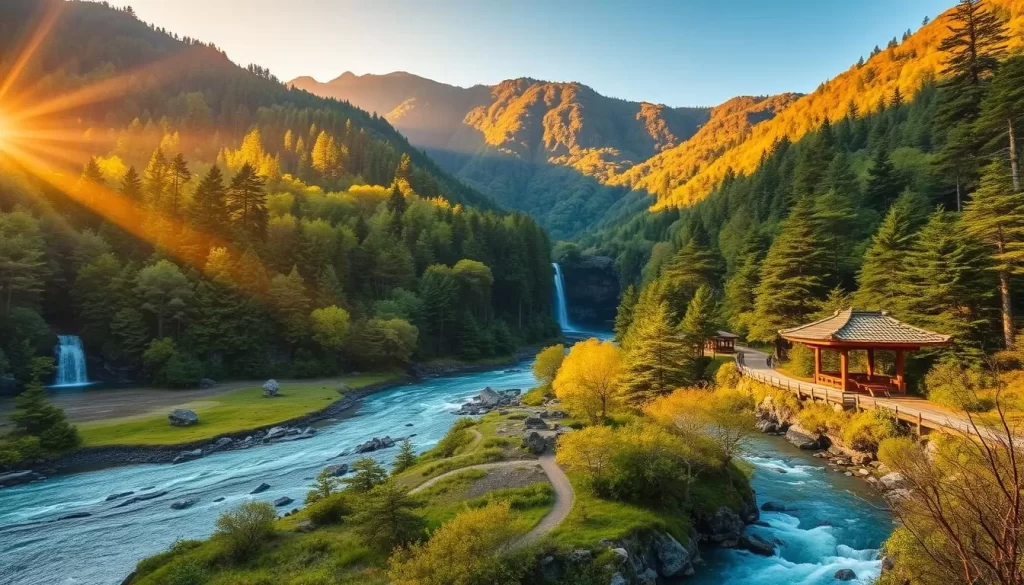
The UNESCO designation has not only helped preserve the park’s unique heritage but has also made it more accessible to international visitors. Today, travelers can experience the rich cultural and spiritual traditions that have defined this region for centuries.
Best Time to Visit Yoshino Kumano National Park
Yoshino Kumano National Park transforms with the seasons, offering a distinct experience in each, from the vibrant life of summer to the serene landscapes of winter. Understanding the seasonal highlights can help you plan your visit for the best experience.
Cherry Blossom Season (Spring)
Spring brings the park to life with its famous cherry blossoms, particularly in Mt. Yoshino, creating a breathtakingly beautiful landscape. This season is a peak tourist time, but it’s an unforgettable experience.
Autumn Colors
Autumn paints the park with vibrant colors as the foliage changes, offering a picturesque landscape. The water features like rivers and waterfalls are especially appealing during this season, adding to the natural beauty.
Summer and Winter Experiences
Summer (June to August) is characterized by lush greenery, making the forests vibrant and offering a refreshing escape. You might even witness Shugendo practitioners performing rituals in the sacred mountains, enriching your cultural experience in the mountain area.
- Summer offers lush landscapes and the chance to see Shugendo practitioners.
- Winter (December to February) brings a tranquil beauty with occasional snowfall, making hot springs (onsen) particularly appealing.
- Both seasons offer more intimate experiences with fewer tourists, allowing for a deeper connection with the natural and spiritual aspects of the area, including the serene water features.
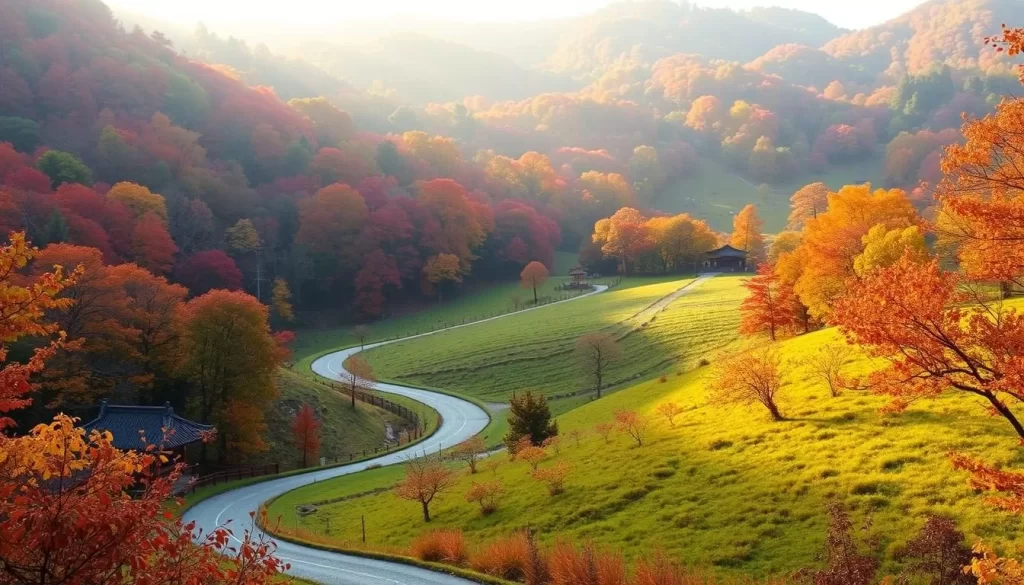
Natural Wonders in Yoshino Kumano National Park
As you explore Yoshino Kumano National Park, you’ll discover an array of natural wonders that showcase the best of Japan’s scenic beauty. The park is home to diverse landscapes, from majestic mountains to serene forests, each offering a unique experience.
Mt. Yoshino’s Cherry Blossoms
Mt. Yoshino is famous for its stunning cherry blossom displays, attracting visitors from around the globe. The mountain is dotted with over 30,000 cherry blossom trees, creating a breathtaking spectacle during the spring season.
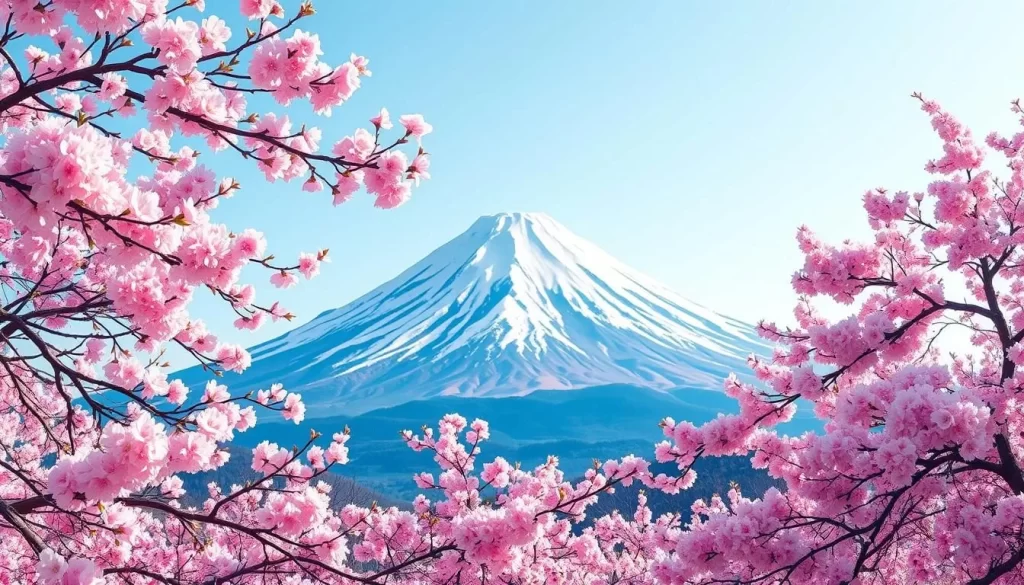
Nachi Falls and Primeval Forest
Nachi Falls, one of Japan’s most iconic waterfalls, is a must-visit attraction within the park. The surrounding primeval forest is equally impressive, with ancient trees and a rich biodiversity that offers a serene and spiritual experience.
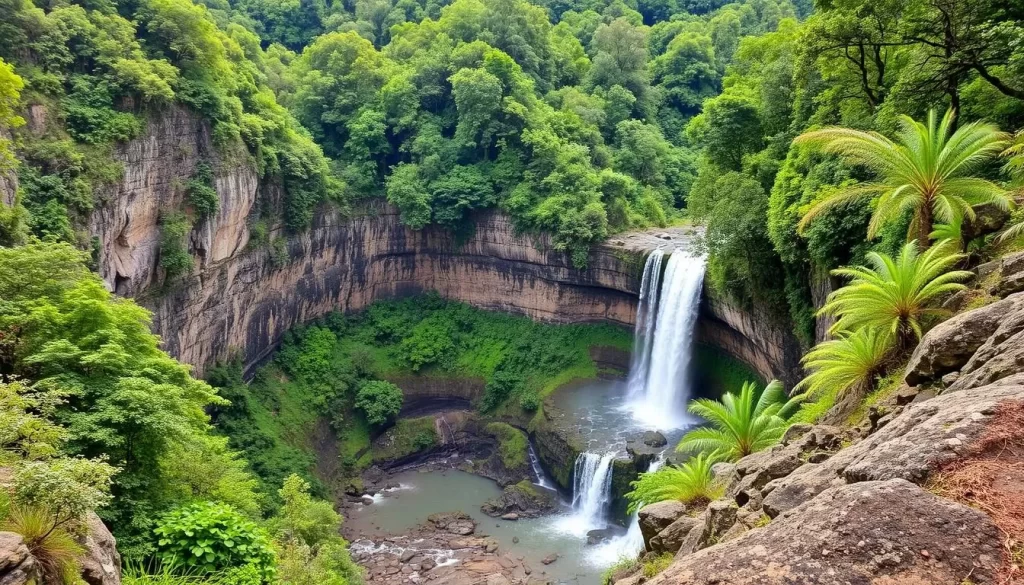
Kii Mountains and Scenic Landscapes
The Kii Mountains form the backbone of Yoshino Kumano National Park, with peaks reaching over 1,000 meters. The mountains have shaped the human experience in this region, creating natural barriers that preserved distinct cultural practices and spiritual traditions. The diverse ecosystems found throughout the mountain range support unique plant and animal communities.
The scenic landscapes offer panoramic vistas of the surrounding nature and, on clear days, glimpses of the Pacific Ocean. Moderate hiking routes make it accessible for visitors to enjoy the mountain landscapes.
Sacred Sites and Spiritual Experiences
Beyond its natural beauty, Yoshino Kumano National Park is home to a rich spiritual heritage, with various sacred sites and experiences waiting to be explored. The park encompasses several significant religious locations that have been revered for centuries.
Kumano Sanzan (Three Grand Shrines)
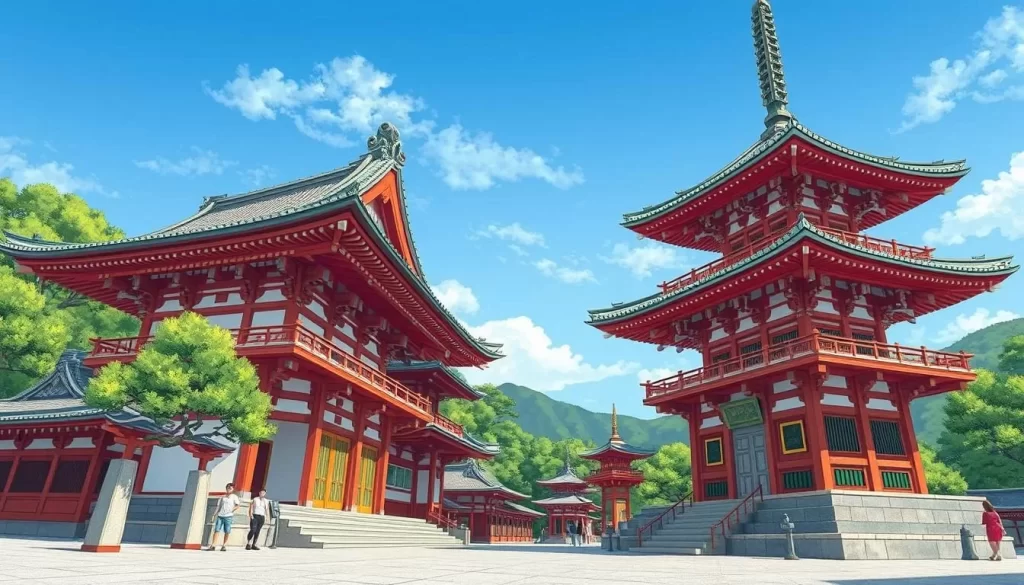
The Kumano Sanzan shrines are a testament to the region’s spiritual significance, attracting pilgrims and visitors from around the world. These three grand shrines – Kumano Hongu Taisha, Kumano Hayatama Taisha, and Kumano Nachi Taisha – are integral to the park’s religious landscape.
Mt. Koya Buddhist Center
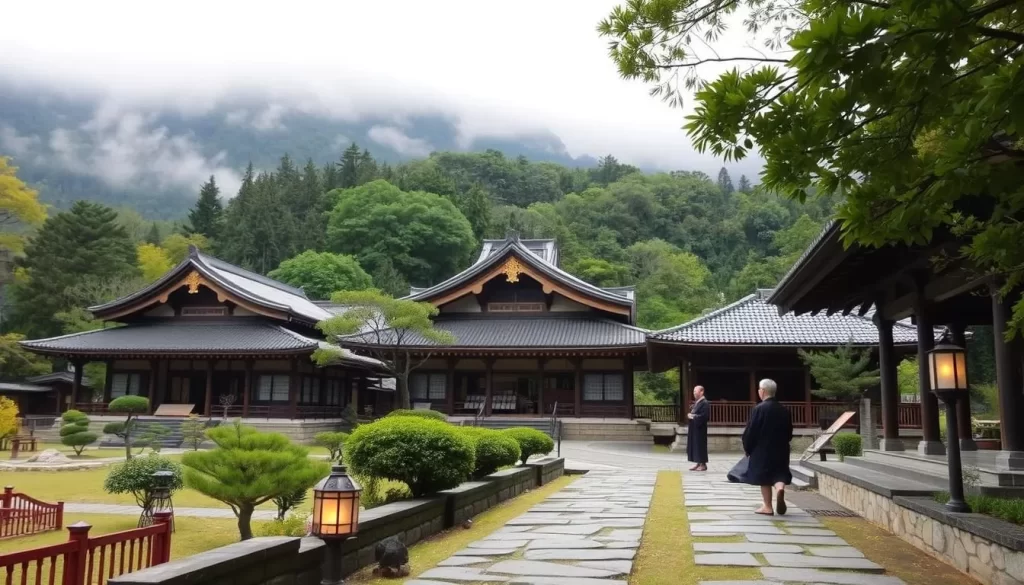
Mt. Koya, or Kōyasan, is a sacred site in Japanese Buddhism, known for its monasteries and temples. Visitors can experience monastic life through a temple stay, participating in meditation and other Buddhist practices.
Shugendo Practices at Mt. Omine
Mt. Omine is the spiritual center of Shugendo, a unique ascetic religion that combines elements of mountain worship, esoteric Buddhism, and Taoism. Practitioners, known as yamabushi, seek enlightenment through physical endurance and communion with nature in the harsh mountain environment. The mountain is dotted with sacred sites, including unusual rock formations and ancient trees venerated for centuries. Visitors can witness or participate in certain Shugendo practices, such as meditation under waterfalls or ritual hiking, offering a profound experience amidst the majestic mountain landscapes.
Top Activities in Yoshino Kumano National Park
Visitors to Yoshino Kumano National Park can experience a mix of nature, culture, and relaxation. The park offers a variety of activities that cater to different interests and preferences.
Hiking the Kumano Kodo Pilgrimage Routes
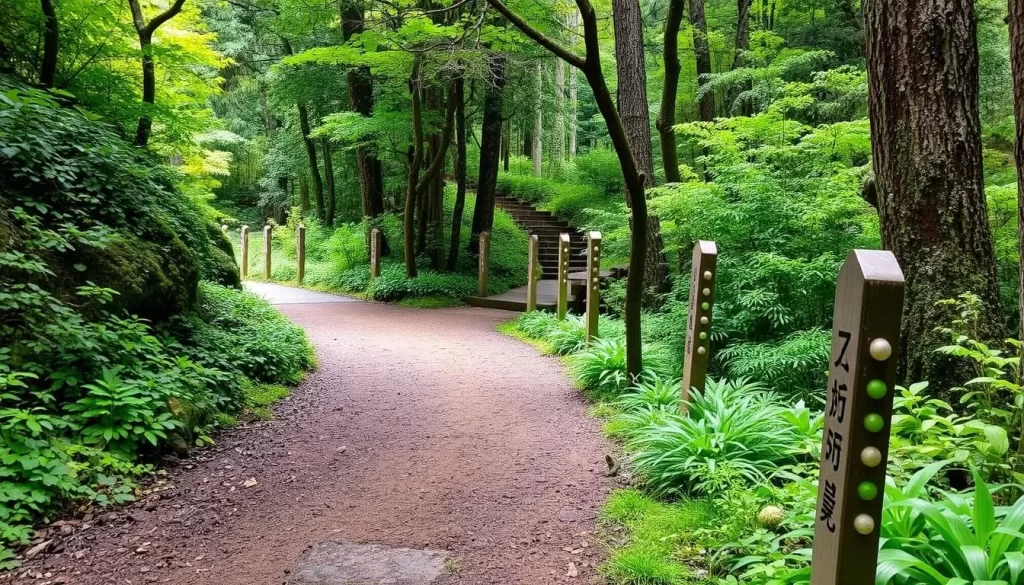
The Kumano Kodo Pilgrimage Routes are a network of ancient trails that crisscross the park, offering hikers a chance to explore its natural beauty and spiritual significance. With various routes to choose from, visitors can select a trail that suits their fitness level and interests.
Aerial Village Forest Activities
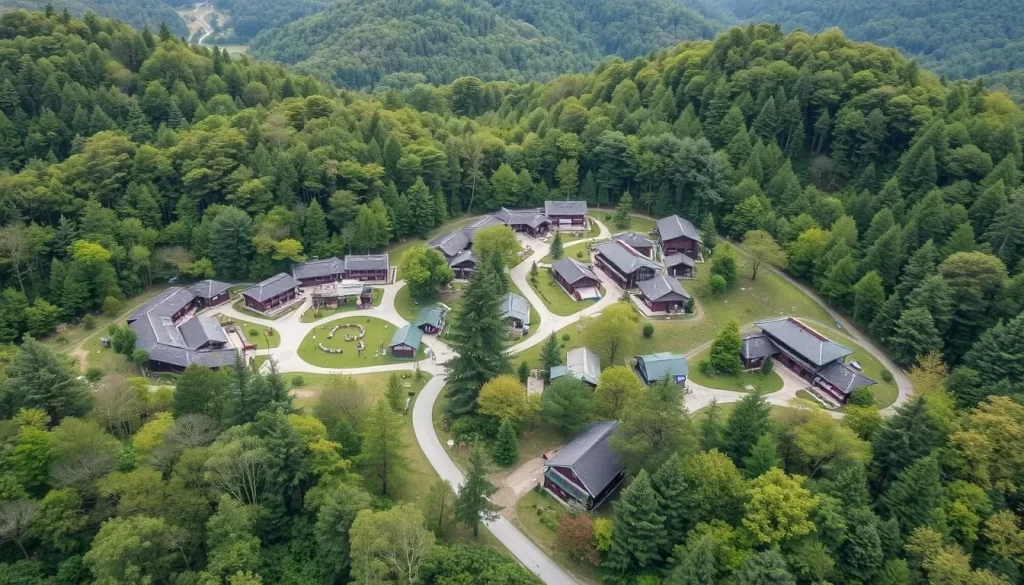
Aerial Village in Totsukawa, Nara, is a unique destination within the park that offers a range of forest activities. Visitors can enjoy hiking, camping, and other outdoor pursuits amidst the beautiful scenery.
Relaxing in Traditional Onsen (Hot Springs)
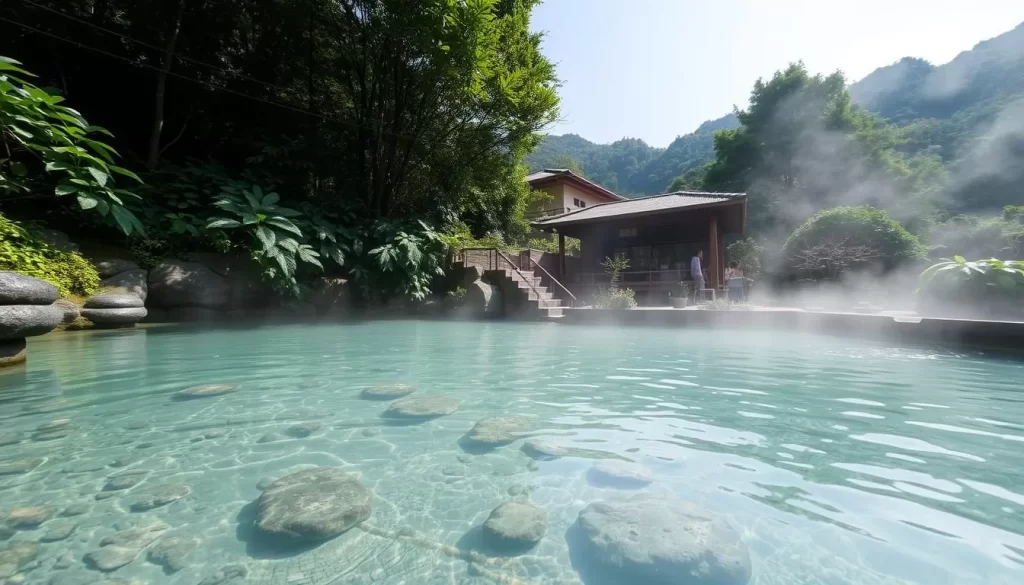
The Kii Peninsula is renowned for its unique onsen culture, with thermal waters heated by geothermal reactions from a fissure in a tectonic plate. Yunomine Onsen, one of Japan’s oldest spa towns, is a highlight, where bathing has become an integral part of the Kumano Kodo Pilgrimage. The water is used in purification ceremonies, and visitors can experience the historic Tsuboyu, the only UNESCO World Heritage-listed bath in Japan. You can also enjoy cooking eggs in a well and relaxing in the warm waters, especially during cherry blossom viewing when the cool spring temperatures make a warm bath particularly welcoming. The onsen experience is a perfect way to unwind after a day of hiking or exploring the park’s natural wonders, and it’s a tradition that has been cherished for over a thousand years.
Some notable onsen towns within the park include Yunomine Onsen and Kawayu Onsen, where hot spring water bubbles up through a riverbed. Visitors can experience traditional Japanese bathing etiquette and enjoy the health benefits associated with the mineral-rich water. The unique onsen experiences in the region, such as the winter tradition of digging personal hot spring baths in the Kawayu River, offer a one-of-a-kind experience.
Practical Travel Information
Before you embark on your journey to Yoshino Kumano National Park, here are some crucial travel tips to keep in mind. Planning ahead will ensure that your trip is both enjoyable and stress-free.
Getting to and Around the Park
Traveling to Yoshino Kumano National Park requires some planning, especially when it comes to transportation. The area is rural, and public transportation options can be limited. You should research the best ways to get to the park and move around once you’re there.
Accommodation Options
From traditional ryokans to modern hotels, Yoshino Kumano National Park offers a range of accommodation options to suit different preferences and budgets. Booking in advance is advisable, especially during peak season when the blossoms are in full bloom.
Essential Travel Tips
When visiting the park, it’s essential to be prepared. Carry sufficient cash, as not all establishments accept credit cards. Be mindful of the season you’re visiting in; for instance, spring brings crowds to see the cherry blossoms, while winter may mean limited services. Pack accordingly, and don’t forget to respect local customs, especially at religious sites and onsen.
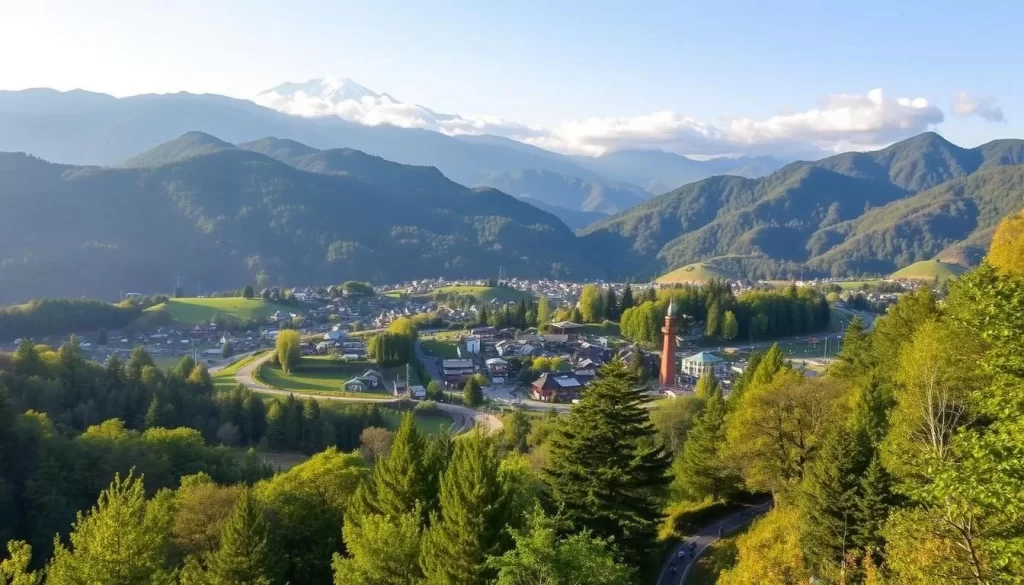
Conclusion: Planning Your Perfect Visit to Yoshino Kumano National Park
Whether you’re drawn to the serene beauty of cherry blossoms in spring or the vibrant colors of autumn, Yoshino Kumano National Park has something for everyone. You can plan a spring weekend trip to witness Mt. Yoshino’s breathtaking cherry blooms or explore the park’s extensive trails over a week-long adventure. Each season offers unique experiences, from spring hikes to autumn foliage and serene mountain landscapes. As you visit, remember to respect and preserve the natural environment and cultural heritage. Embark on this transformative journey to experience the perfect blend of nature and spirituality.
The above is subject to change.
Check back often to TRAVEL.COM for the latest travel tips and deals.
